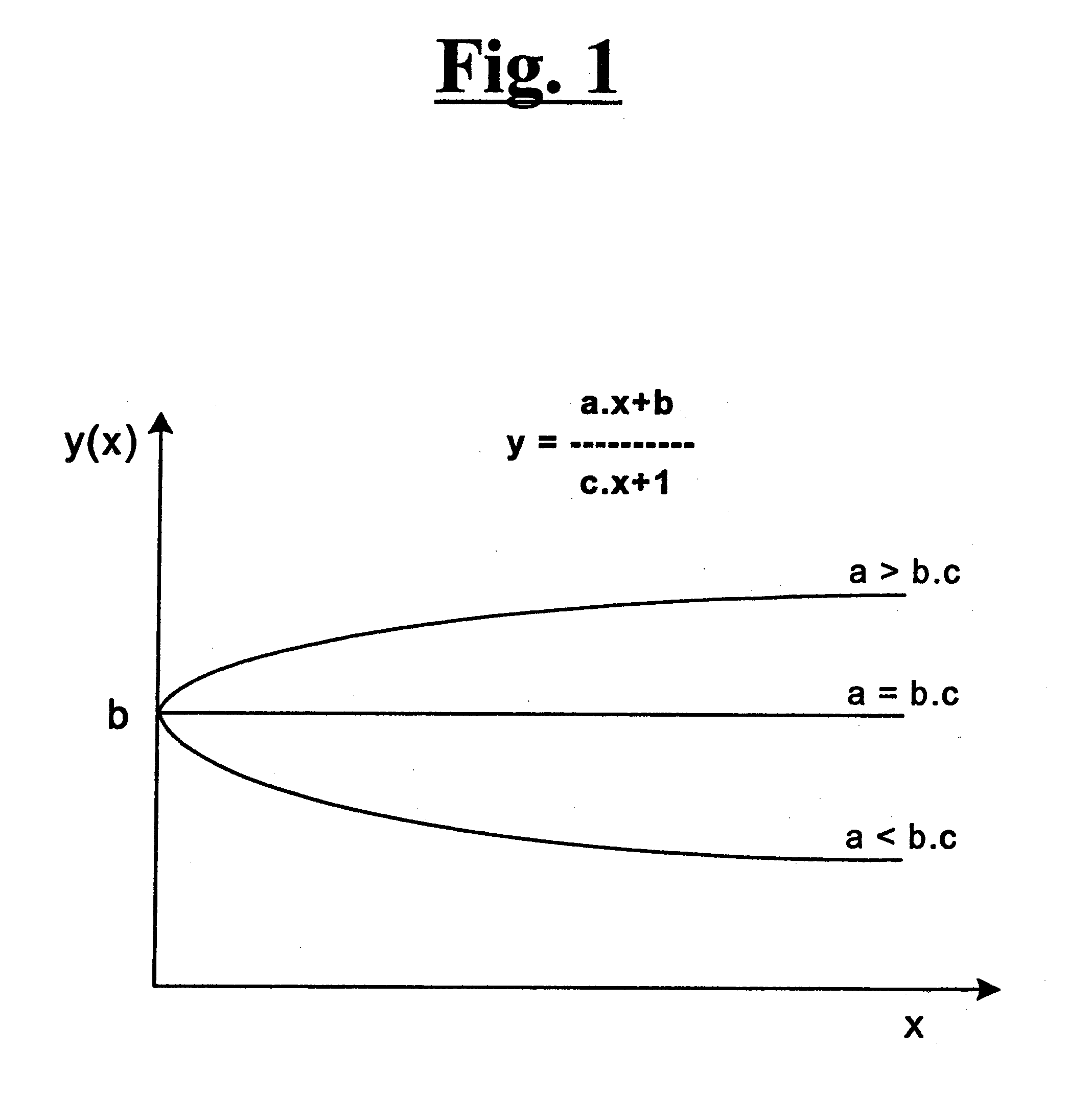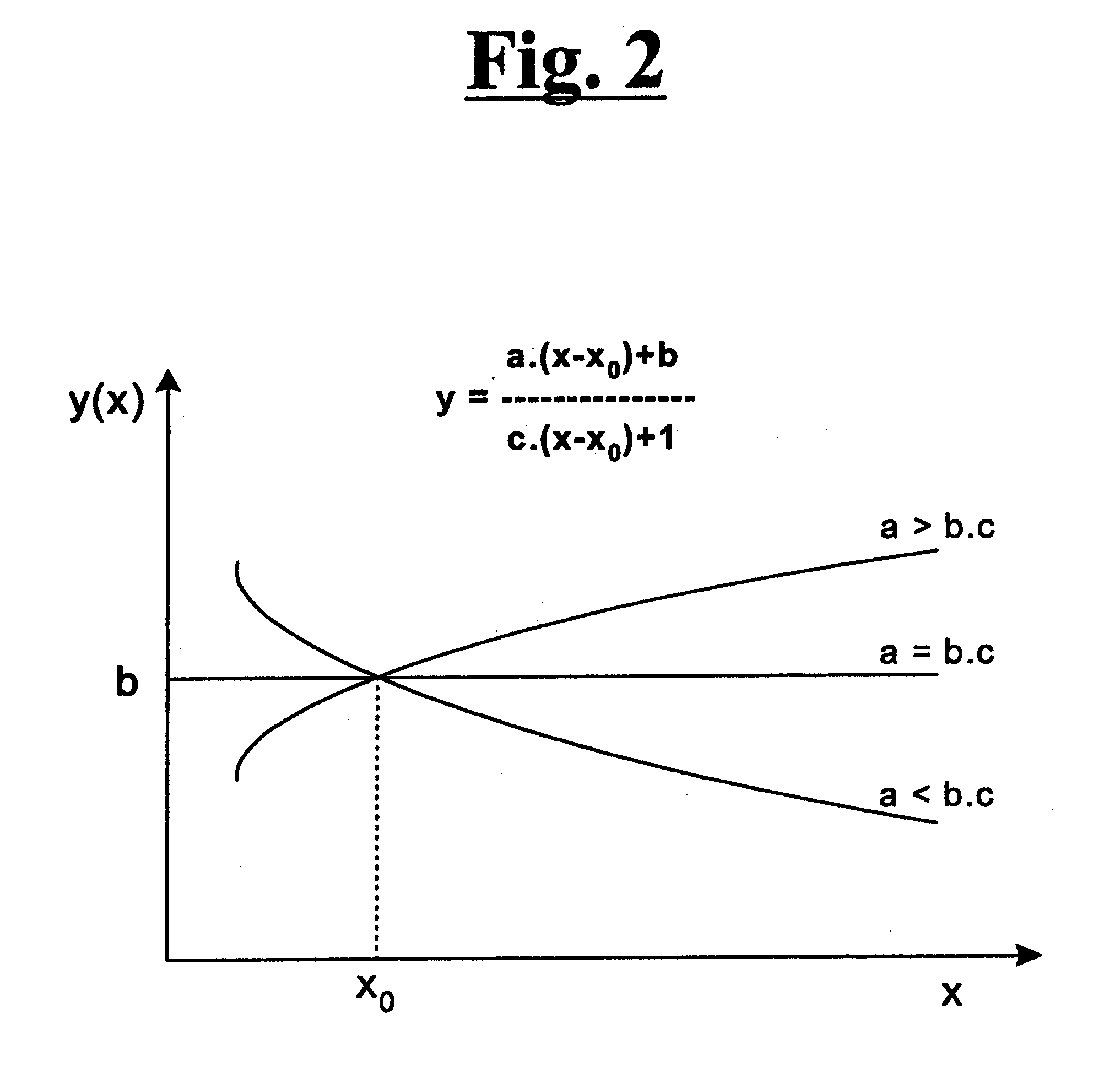Pade' approximant based compensation for integrated sensor modules and the like
a sensor module and approximation technology, applied in the field of electronic systems, can solve the problems of insufficient interface directly with the electronic or other control system, distorted, and comparatively weak electric or other signals generated by the sensor in response to a given physical attribute that is being sensed (e.g., ) to achieve the effect of low cost mass production, high accuracy and reduced power consumption
- Summary
- Abstract
- Description
- Claims
- Application Information
AI Technical Summary
Benefits of technology
Problems solved by technology
Method used
Image
Examples
embodiment 1000
[0110]FIG. 10 is a schematic of a digitally-implemented, first order Padé Approximant compensating circuit 1000. FIG. 10 shows a digital embodiment 1000 that is roughly equivalent to the analog embodiment of FIG. 6. Vin may be converted to digital format if not already in that format, by the front end A / D converter. Vout may be converted to analog format by the back end D / A converter if such an analog output format is needed. Otherwise, the already digitized Vout signal may be serially output from the module via the serial data link. (See again the I / O interface 1290 of FIG. 12.)
[0111]FIG. 11 is a block diagram of a sensor and sensor-containing environment in accordance with the invention.
[0112]FIG. 12 is a schematic of yet another sensor module 1201 in accordance with the disclosure. The to-be-sensed physical parameter, P(t), is coupled into the module 1201 from the external environment 1200. Coupling may be accomplished wirelessly, such as by magnetic and / or electrostatic coupling...
embodiment 1500
[0129]FIG. 15 is a schematic of an embodiment 1500 having a digital input multiplier (the leftmost D / A converter) at the front end of the mapping circuit and a further digital multiplier receiving feedback from the output.
embodiment 1600
[0130]FIG. 16 is a schematic of a further embodiment 1600 having a 3-input multiplier at the front end of the mapping circuit and a 3-input summer before the variable gain amplifier.
PUM
 Login to View More
Login to View More Abstract
Description
Claims
Application Information
 Login to View More
Login to View More - R&D
- Intellectual Property
- Life Sciences
- Materials
- Tech Scout
- Unparalleled Data Quality
- Higher Quality Content
- 60% Fewer Hallucinations
Browse by: Latest US Patents, China's latest patents, Technical Efficacy Thesaurus, Application Domain, Technology Topic, Popular Technical Reports.
© 2025 PatSnap. All rights reserved.Legal|Privacy policy|Modern Slavery Act Transparency Statement|Sitemap|About US| Contact US: help@patsnap.com



